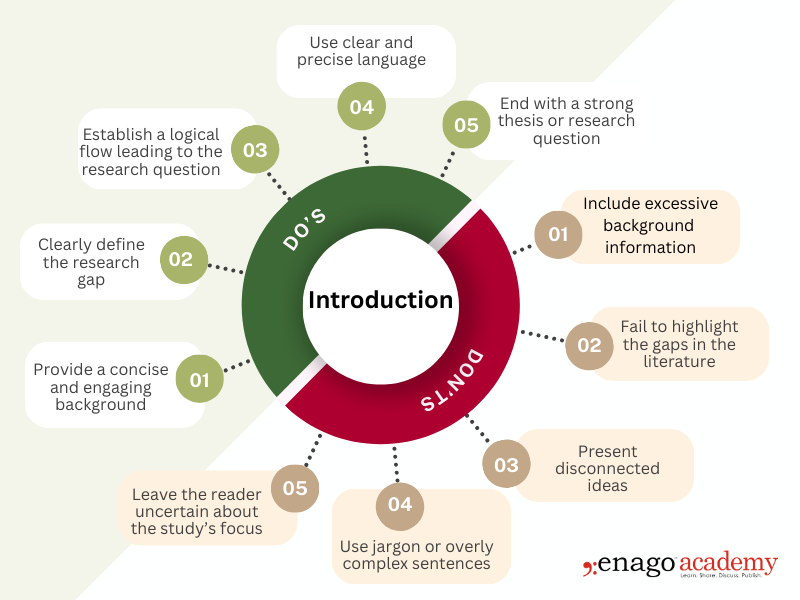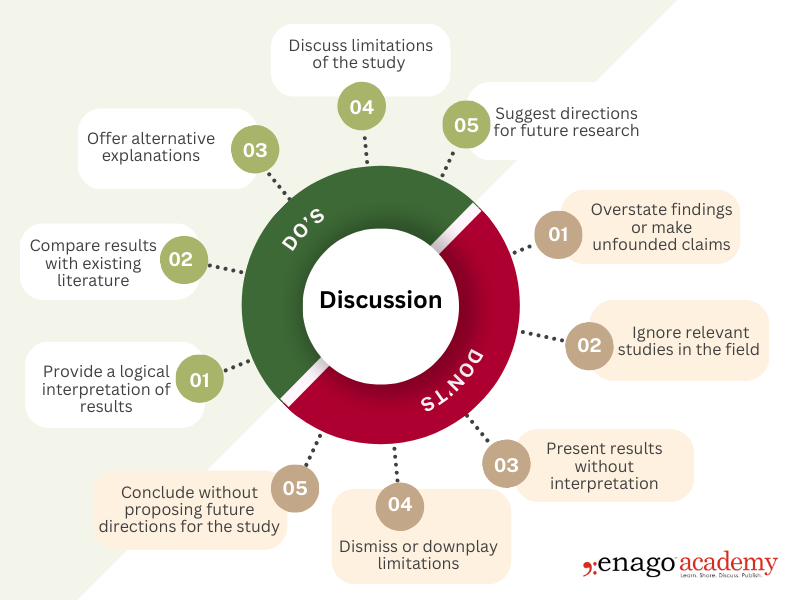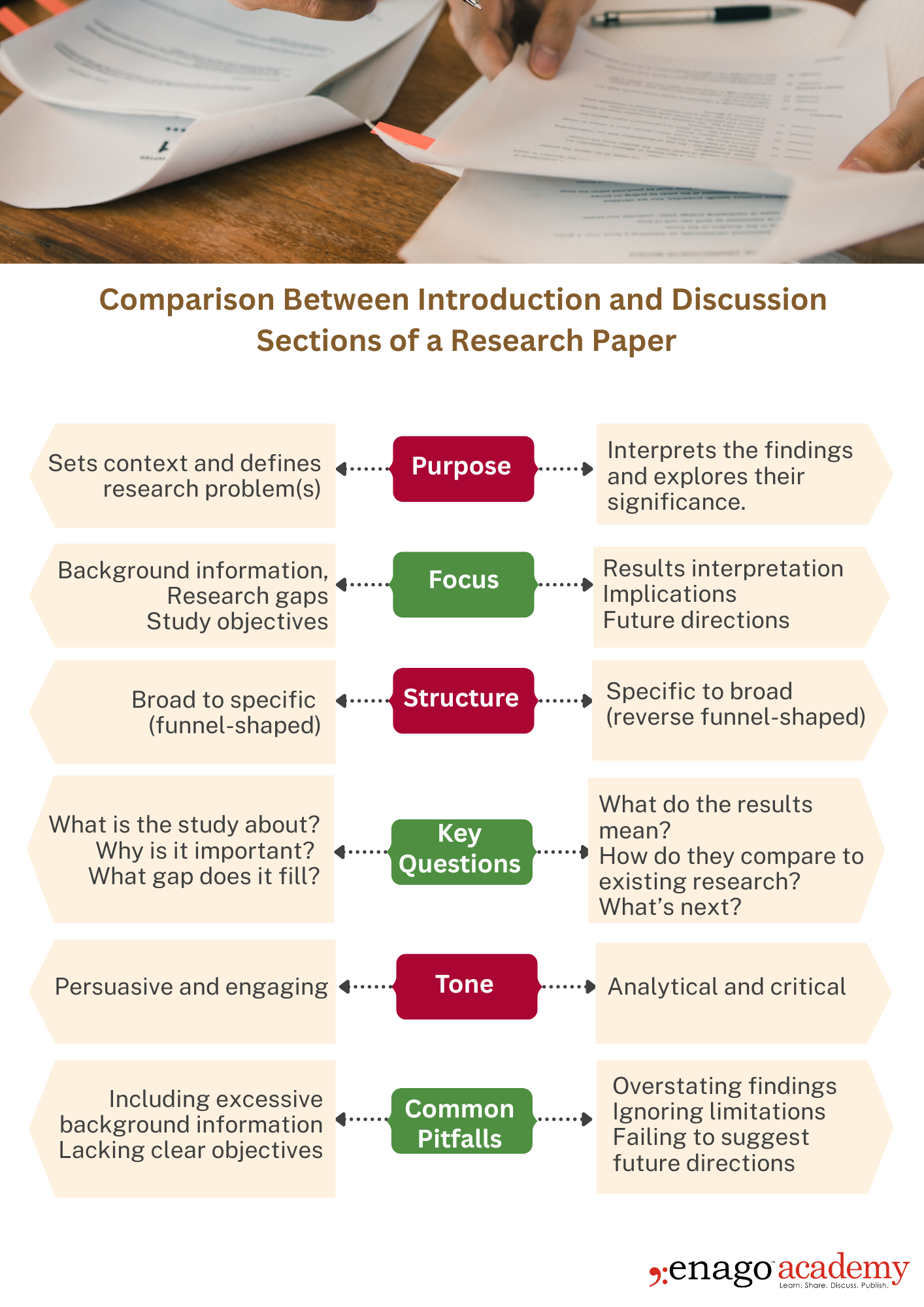Have you ever wondered what makes a research paper impactful? Beyond the data and findings, it’s the way a study is framed and interpreted that determines its significance and reach among a wider audience. The Introduction and Discussion sections help achieve this by highlighting the need and the value of the study. The Introduction section sets the stage and positions the work done within the broader academic landscape and the Discussion section interprets the findings, emphasizing their significance.
Though they serve different purposes, these sections have some similarities. Both must be clear, coherent, and structured logically. Furthermore, they help readers understand the research context and the value the study contributes. However, many researchers struggle to differentiate their functions, leading to redundancy or misaligned content in the manuscript. Let us now take a closer look at both these sections to avoid any such mistakes in future.
The Introduction Section
Purpose
The Introduction should provide essential background information and clearly highlight the research gap that the paper aims to address. A well-crafted Introduction captures the interest of a wider audience, establishes relevance, and lays a solid foundation for understanding the study’s objectives. It sets the tone for the entire paper and ensures that the research is positioned well within the broader academic field.
Key Components of the Introduction Section
- Context or Background
Introduce the broader research area and highlight the significance of the subject of interest. - Current Knowledge in the Field
Summarize existing research, providing an overview of established knowledge in the field. - Gaps and Unanswered Questions
Identify unresolved questions or limitations in previous studies. This helps set the novelty of the study - Study Objectives and Research Questions
Mention the research problem, objectives, and the hypotheses being tested. - Importance of the Study
Explain why the research is relevant and what contributions it aims to make in the field.
Best Practices for Writing the Introduction Section
 A well-structured Introduction section maintains the reader’s interest while ensuring that the research is properly contextualized. By keeping it concise and logically structured, authors can create a compelling entry point for their work.
A well-structured Introduction section maintains the reader’s interest while ensuring that the research is properly contextualized. By keeping it concise and logically structured, authors can create a compelling entry point for their work.
Ask yourself the following questions while you are working on the Introduction section of your research article:
- What is the broader topic of the research? Why is this topic important in the field?
- What is already known about this topic? What are the key studies and existing knowledge related to the research area?
- What are the gaps in current research? What is missing, unclear, or unresolved in previous studies?
- What does this study aim to investigate, test, or explore?
- What new insights, perspectives, or advancements does this research bring?
- What general methods or frameworks are being used?
The Discussion Section
Purpose
The Discussion should interpret and clearly state the implications of the findings. It should contextualize the results within field, acknowledge any limitations of the study, and propose directions for future research. Unlike the Introduction which sets up the research questions, the Discussion addresses how the findings answer those questions and what their broader significance is.
Key Components of the Discussion Section
- Summary of Key Findings
Summarize the important results that forms the foundation of the research paper - Comparison with Existing Research
Contextualize the findings by comparing them with previous studies, highlighting agreements and discrepancies. - Alternative Explanations
Discuss the implications and provide possible reasons for contradictory results. At times, this could be due to change in the model systems, methodology adopted, parameters analysed, etc. - Study Limitations
Acknowledge methodological constraints and other limitations. Do not overstate the findings. - Implications and Future Directions
Emphasize how the findings contribute to the field and propose potential avenues for future research. - Practical Applications
Discuss how the findings can be applied in real-world scenarios (if applicable).
Best Practices for Writing the Discussion Section
 By structuring the Discussion section effectively, authors can ensure that their findings fit in the broader academic conversation.
By structuring the Discussion section effectively, authors can ensure that their findings fit in the broader academic conversation.
Ask yourself the following questions while you are working on the Discussion section of your research article:
- What are the main findings of the study? How do these findings address the research question presented in the Introduction?
- How do the findings compare to previous research? Do they support, contradict, or expand on existing studies?
- What are the possible explanations for the results? Are there any alternative interpretations for contradictory results?
- What are the implications of these findings? How do the results contribute to the field, practice, and/or policy?
- What are the limitations of the study? Are there any methodological constraints, biases, or areas where caution is needed?
- What questions remain unanswered, and what should future studies explore?
Comparing Introduction and Discussion: Key Differences
While both these sections play a crucial role in structuring a research paper, their functions are distinct. The Introduction leads the reader into the study, while the Discussion provides closure by interpreting results and their broader impact. Understanding these differences helps authors write clear and impactful manuscripts.
 The Introduction and Discussion sections are critical to a research paper’s success. By following the structure and maintaining clarity, coherence, and logical progression in these sections, authors can enhance their manuscript’s impact.
The Introduction and Discussion sections are critical to a research paper’s success. By following the structure and maintaining clarity, coherence, and logical progression in these sections, authors can enhance their manuscript’s impact.
Professional services like Enago’s proofreading service can be immensely helpful to further the impact of research articles by providing expert guidance, ensuring precision, coherence, and impact in academic work. Investing in high-quality services can significantly enhance the readability and effectiveness of research papers, ultimately increasing their chances of publication and citation.










